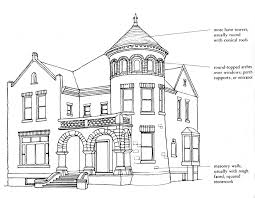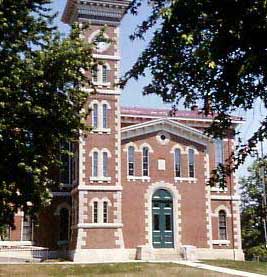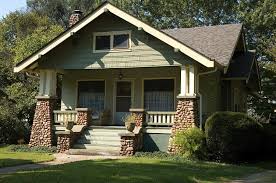| Sponsored Links |
 Architecture shows the classification of architectural styles in terms of form, technique and materials in the integration of architectural design from the top sharpener period of time. There are developing various types and various architectural styles over the years, listed blow are some of the more popular.
Architecture shows the classification of architectural styles in terms of form, technique and materials in the integration of architectural design from the top sharpener period of time. There are developing various types and various architectural styles over the years, listed blow are some of the more popular.Art Deco
Colonial
 More than just a design element, colonial architecture refers to a period in American architecture, between the early 1600s, when colonists first began to build settlements, and 1776 years of the colonies declared their independence from Britain. Economical, subtle and basic, reflecting the practice of colonial design building early American settlers. Although Colonial architecture is often seen as stately and symmetrical with regular arrangement of windows, it actually comes in several, shapes sizes and styles that reflect the diverse cultural traditions of British, Dutch, Spanish and French.
More than just a design element, colonial architecture refers to a period in American architecture, between the early 1600s, when colonists first began to build settlements, and 1776 years of the colonies declared their independence from Britain. Economical, subtle and basic, reflecting the practice of colonial design building early American settlers. Although Colonial architecture is often seen as stately and symmetrical with regular arrangement of windows, it actually comes in several, shapes sizes and styles that reflect the diverse cultural traditions of British, Dutch, Spanish and French.Contemporary
 Contemporary style house became very popular between 1950 and 1970. There are two types of contemporary American architecture - the kind of flat roof and a pointed roof types. It is marked with odd-sized windows and often high, the lack of ornamentation, and a unique blend materials such as stone walls, brick, and wood. Both types of designs are one-story high and is designed to combine the architecture of the surrounding landscape into their overall look.
Contemporary style house became very popular between 1950 and 1970. There are two types of contemporary American architecture - the kind of flat roof and a pointed roof types. It is marked with odd-sized windows and often high, the lack of ornamentation, and a unique blend materials such as stone walls, brick, and wood. Both types of designs are one-story high and is designed to combine the architecture of the surrounding landscape into their overall look.Georgia
 Fantastic and the kingdom, Georgian architecture was the style in honor of England's first three kings, who are also named George. Formal and stately Georgian homes known for their fine design and symmetrical with paired chimneys and a decorative crown above the front door. Another unique feature is the orderly rows of five windows on the second floor. With a roof-side sport spiky, Georgia home 2-3 stories tall, and built in brick. In addition to symmetry, this type of architecture typified by a rich classical detail such as the large Greek or Roman style columns, entryways complex with beautiful arched windows above their rest and elegant ornaments.
Fantastic and the kingdom, Georgian architecture was the style in honor of England's first three kings, who are also named George. Formal and stately Georgian homes known for their fine design and symmetrical with paired chimneys and a decorative crown above the front door. Another unique feature is the orderly rows of five windows on the second floor. With a roof-side sport spiky, Georgia home 2-3 stories tall, and built in brick. In addition to symmetry, this type of architecture typified by a rich classical detail such as the large Greek or Roman style columns, entryways complex with beautiful arched windows above their rest and elegant ornaments.Gothic Revival
Gothic Revival became popular in the mid-1800s. This style is heavily influenced by English romanticism and elaborate wooden millwork. It is marked by Gothic windows with distinctive pointed arches and exposed timber framing and displaying a domed roof with steep cross gables. They also include luxury features such as towers and verandas.
International
European architects initiated the modern architectural style in the 20th century. Using materials such as concrete, glass and steel, without ornamentation or decoration. Landscape architecture in an international force to introduce the idea of exposed functional building elements such as elevator shafts, window plate surface-to-ceiling glass, and smooth facades.
Prairie House
The first Prairie-style home designed by Frank Lloyd Wright in Chicago in 1893. Style of American architecture reached its peak between the 1900s and the 1920s and focused on a simple house that blended the natural beauty of the Midwestern landscape. It consists of two main styles - boxy and symmetrical brick or low-slung and asymmetrical and the materials used are and clapboard. This low-pitched gable with a roof right over the wall, creating the effect of allowing it to blend with the landscape. Other details include pronounced overhangs, stone belt to accentuate the horizontal design, line casement windows, one-story porch with square supports and stylish large terra cotta flower and a circle-geometric or decorative stone around doors, windows, and cornices.
Victorian shingle
American architectural style used widely in the cottages along, trendy wealthy coastal cities north-east of Long Island and Newport in the late 19th century. Wide verandah, unadorned doors, windows, and cornices, sharply pitched roof line is symbolic of this style. continuous wood shingles cover the entire surface of the house, giving a cohesive appearance. Some unique features in this style include dormers, balconies hidden, and the bell tower with a roof or sides of the cone structured under shingles.
Tudor
This architecture began in the 1920s and the 1930s, but continues to remain a popular architectural style in the suburbs across the United States even today. It is characterized by half-wood on bay windows and upper floors with a facade that is spoken by one or more steeply pitched cross gables. Patterned brick or stone wall, round the door, multi-paned casement windows, and large stone chimneys are also several features of architectural styles.
Victoria
Victorian architecture in America comes in the second half of the 19th century, when Americans identify new approaches to building and design. Victorian styles including Second Empire, Italy, Stick, and Queen Anne, among others. The progress of modern technology to ensure incorporation of ornaments such as brackets, spindles, and patterned shingles into the Victorian design.
Reference:
[1] William Brister, http://EzineArticles.com/?expert=William_Brister

No comments:
Post a Comment